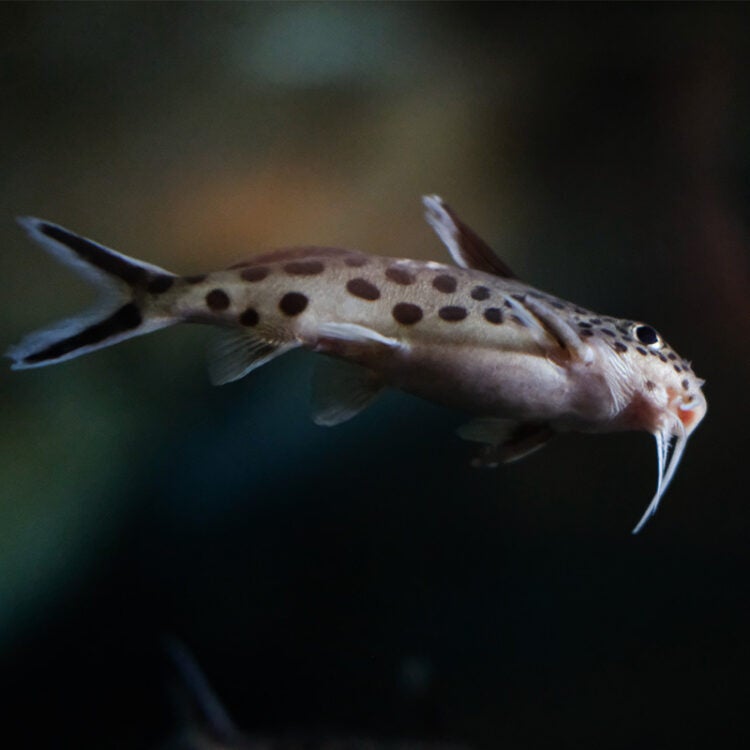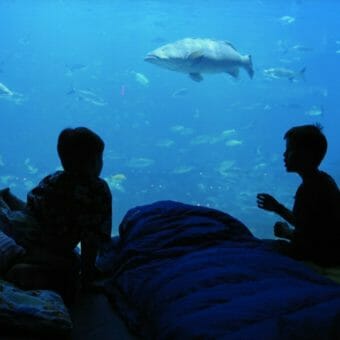-
Size
Up to 10.8 inches (27 cm) -
Diet
Omnivorous bottom feeder -
Range
Occurs in Lake Tanganyika, Africa -
Habitat
Found over muddy bottoms
Physical Characteristics
- Maximum length of 10.8 inches (27.4 cm).
- The body is typically white, tan or gold with black spots that increase in size from the head towards the tail.
- Dorsal, pectoral and caudal fins are predominantly black with white edges. The two anal fins are also pale, with small black triangles close to the body.
- Barbles are typically white.
Animal Fact
The cuckoo catfish is the only fish known to practice brood parasitism.
Diet / Feeding
- Omnivorous bottom feeder.
Range / Habitat
- Occurs in Lake Tanganyika, Africa.
- Found over muddy bottoms at depths up to 328 feet (100 m).
Reproduction & Growth
- Oviparous, or egg-laying, species.
- Forms distinct pairs when mating.
- Only fish known to practice brood parasitism.
- A breeding pair will mix its eggs into the spawning nests of mouthbrooding cichlids.
- Cichlids take the eggs into the mouth, mixing the catfish eggs with the cichlid eggs.
- Catfish larvae grow faster than those of the cichlid host and will feed on the cichlid larvae.
Conservation Status
- “Least Concern” on the IUCN Red List.





